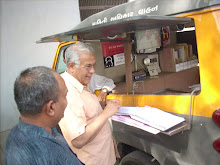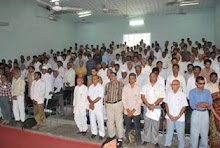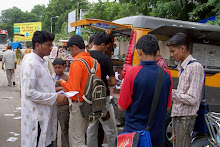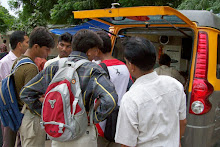Bar
& Bench: New Delhi: Tuesday, 24 November 2015.
On October 16
of this year, the Supreme Court passed a historic decision, holding that the
National Judicial Appointments Commission was in violation of the Constitution
of India. Predictably, the 1,036-page judgment raised quite a storm, including
some of the most public critiques a Supreme Court judgment has ever seen.
Yet within
this judgment, lay another, equally significant decision to invite public
opinion on improving the collegium system. To this end, the Court elicited suggestions
based on four criteria transparency, eligibility, secretariat and complaints.
Until
November 4, over 60 suggestions have been compiled by Additional Solicitor
General Pinky Anand and Senior Advocate Arvind Datar. Among the contributors are stalwarts from the
Bar and Bench alike including Fali Nariman, Ram Jethmalani, KK Venugopal,
former Chief Justice of India MN Venkatachaliah, former Supreme Court judge the
late JS Verma J. (submitted in 2010) and even a sitting apex court judge Justice
FMI Kailfulla.
And this is
what has been provided so far.
Transparency
While some
suggestions demand complete transparency in the working of the collegium,
others such as Fali Nariman, believe that too much transparency can do more harm
than good. He believes that if the candidates’ information is made public, it
may not be used for “appropriate purposes”.
Senior
Advocate Sunil Gupta concurs with Nariman, calling for a balance between
confidentiality and transparency. He has suggested that transparency should be
maximum at the stage of application, but the consultative process of the
collegium must remain confidential.
On the topic
of the collegium’s deliberations, some suggest that the minutes of all meetings
should be recorded and made available online, with some even saying that the
minutes should come under the purview of the RTI Act. As reported earlier, the
Centre has suggested that the minutes be recorded in the National Archives.
To ensure
that high court collegiums consider their best judges for elevation, one
suggestion made is to conduct interview with candidates so that collegium
judges can get to know candidates from different benches. Further, in order to
ensure full transparency, the rejected candidate should be given reasons as to
why his elevation was objected.
The other
suggestions include disclosure of relatives who are judges, an annual report on
judicial appointments, and informal meetings between the collegium and the
concerned Chief Minister to avoid any delay in appointments.
Eligibility
Most of the
suggestions under this head call for objective, well-defined eligibility
criteria. In order to achieve this, it has been suggested that something on the
lines of Australia’s point grade system for judges be used in India. A written
examination and interview has also been suggested.
Another
opinion is that candidates who make an “expression of interest” to become a
judge also be considered. This may resemble the Senior Advocate application
system prevalent in many high courts.
As far as
Supreme Court elevations are concerned, it has been suggested that not only the
Chief Justice of a high court, but also other meritorious judges and even
members of tribunals be considered for elevation.
For district
judges on the threshold of being elevated, it is suggested that the minimum
experience requirement be reduced to 12 months from 18. This suggestion was
made as a solution to the alarming number of vacancies.
Other
suggestions include reservations for minorities, special consideration for
those who have donepro bono work, and a 10% quota for Supreme Court judges from
the Bar.
Secretariat
The
suggestions call for a Secretariat to assist the collegium in collecting
information on quality and quantity of judgments delivered by candidates,
number of landmark cases and even information on the number of publications to
assess ‘academic credibility’ of the potential judges.
Others have
suggested that the members of the Secretariat should have the same independence
and status as the members of the Supreme Court Registry and should be free from
Executive interference. One suggestion is that the permanent Secretariat should
be headed by a past director of the National Judicial Academy or a Vice-Chancellor
of a law university and that no practicing lawyers should be part of it.
A joint
submission by former Supreme Court judges Venkatachaliah & Verma JJ. in
2010 calls for a Search Committee to assist the Secretariat.
Complaints
The lawyers
and judges have emphasized that a system of complaints against judges is of
paramount importance. However, such complaints should be treated with caution.
It has been suggested that only complaints with material evidence are to be
entertained, and that the judge in question should be given a chance to respond
to the allegations.
It has also
been proposed that complaints be looked into by a panel of retired judges.
Venkatachaliah and Verma JJ. had called for the constitution of a National
Oversight Committee to deal with such complaints.
Another
interesting suggestion is that the names of the judges should be disclosed to
the public 30 days before consideration by the collegium. During this period,
the public can write to Secretariat about grievances against members.
Miscellaneous
The Union of
India has made the following suggestions on judge transfers:
· Transfers should be made by the Supreme Court collegium
after consulting Chief Justices of the transferee and transferor high courts.
· If a complaint is received against a judge, disciplinary
proceedings should be initiated; in no case should a complaint become the
reason to transfer a HC judge.
· Every transfer order should contain reasons to be made
public.
Another
notable suggestion is to increase the number of women judges in the higher
judiciary. As of now, the Supreme Court has 1 woman judge (Justice Banumathi)
and all High Courts combined have a mere 63 woman judges. To put that in
perspective, only 10.3% of sitting High Court judges are women.














































































